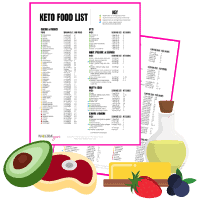
Free Printable: Low Carb & Keto Food List
Get It NowHave you made shirataki noodles before? Sometimes they go by other names: Konjac noodles or miracle noodles. Until recently, they were not one of my favorite keto pasta options. The texture was a little off-putting. But then I decided to play with some different preparation methods, and found a way that works very well — this shirataki noodles recipe has a texture that’s really close to real pasta. Even my young kids went for it!
I liked this method so much that I now sometimes substitute these for the zucchini noodles in keto pho and zucchini alfredo, the spaghetti squash in keto pad thai and spaghetti squash casserole, or the kelp noodles in kani salad. Once you learn how to cook shirataki noodles this way, I think you’ll be a convert for many of your pasta dishes, too.
What Are Shirataki Noodles?
Shirataki noodles, also called konjac noodles or miracle noodles, are a low- or zero-calorie noodle made from the root of the konjac plant. They have been eaten in Japan for over a thousand years [*]! They don’t taste much like anything on their own, but will take on the flavor of whatever sauce you use, much like regular pasta.
These miracle noodles are made from glucomannan fiber, which is the gelatinous fiber found in the root of the konjac yam, but some other varieties are made from tofu. I personally buy this brand, as I prefer konjac noodles over those made with tofu (see why I try to limit soy here).
Why You’ll Love This Shirataki Noodles Recipe
- Neutral taste (so it takes on any sauce flavor)
- Al dente noodle texture
- Simple ingredients
- Just 3.4g net carbs per serving with the sauce, or 1g net carbs without the sauce (won’t spike blood sugar!)
- Ready in less than 30 minutes
- Naturally low-calorie, low carb, keto friendly, vegetarian, gluten-free, and packed with prebiotic soluble fiber
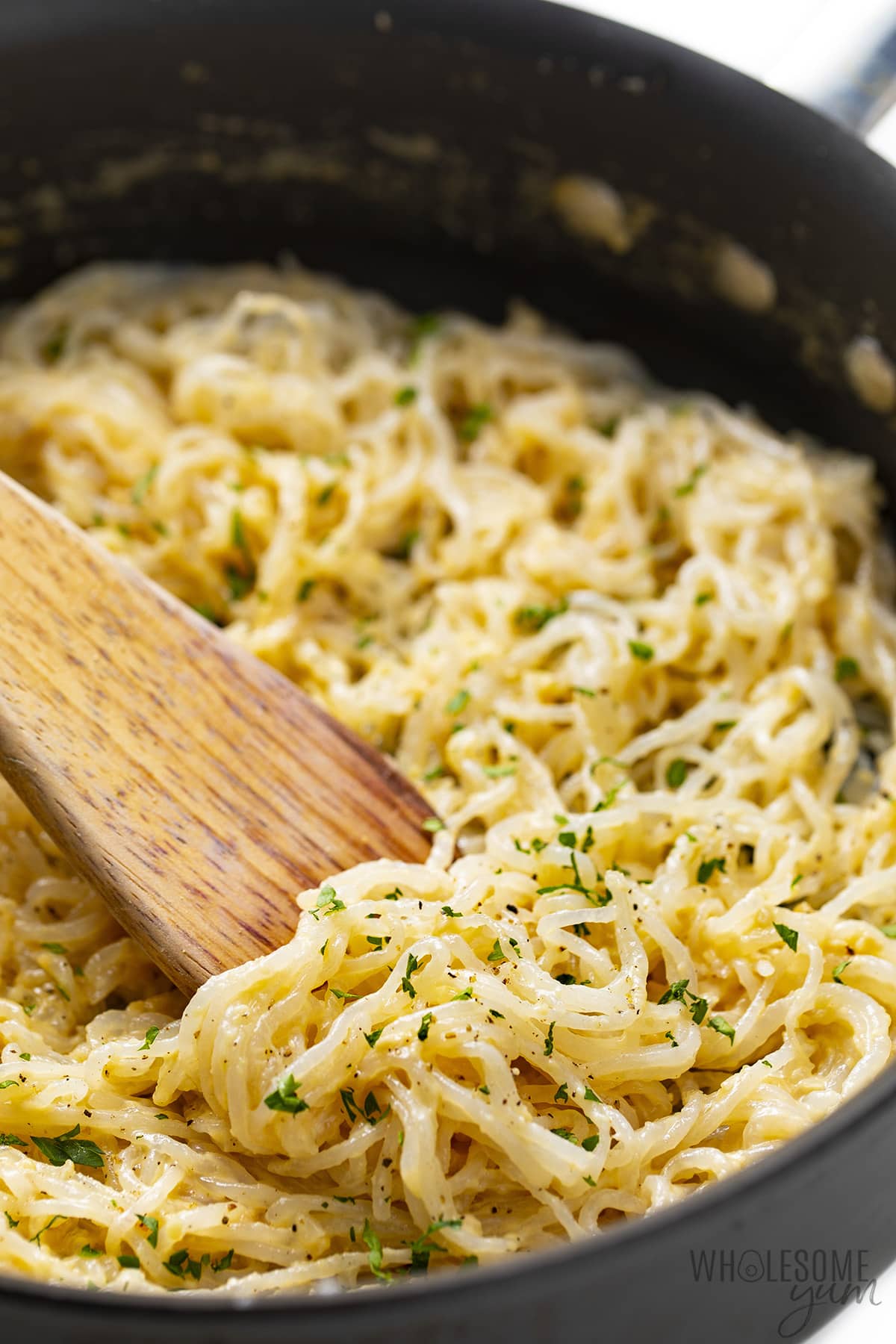
How To Cook Shirataki Noodles
This section shows how to cook konjac noodles, with step-by-step photos and details about the technique, to help you visualize it. For full instructions, including amounts and temperatures, see the recipe card below.
How To Prepare Shirataki Noodles:
The instructions on the package typically say to just rinse and eat, but I don’t recommend this. If you don’t cook them properly, they can have a rubbery or slightly crisp texture. That’s why I tested extensively (6 times!) to find the best method, below. Made correctly, they have a texture very similar to al dente pasta (and you can try this method with shirataki rice too). Try it out and see!
- Rinse. Place the shirataki noodles in a colander and run under cool running water. This helps neutralize their flavor.
- Boil. Bring a large pot of water to a boil. Add the noodles and boil.
TIP: Boiling is technically optional, but recommended for texture.
You can skip it if you really want to, but I did a comparison test with and without, and doing this step definitely improved texture.
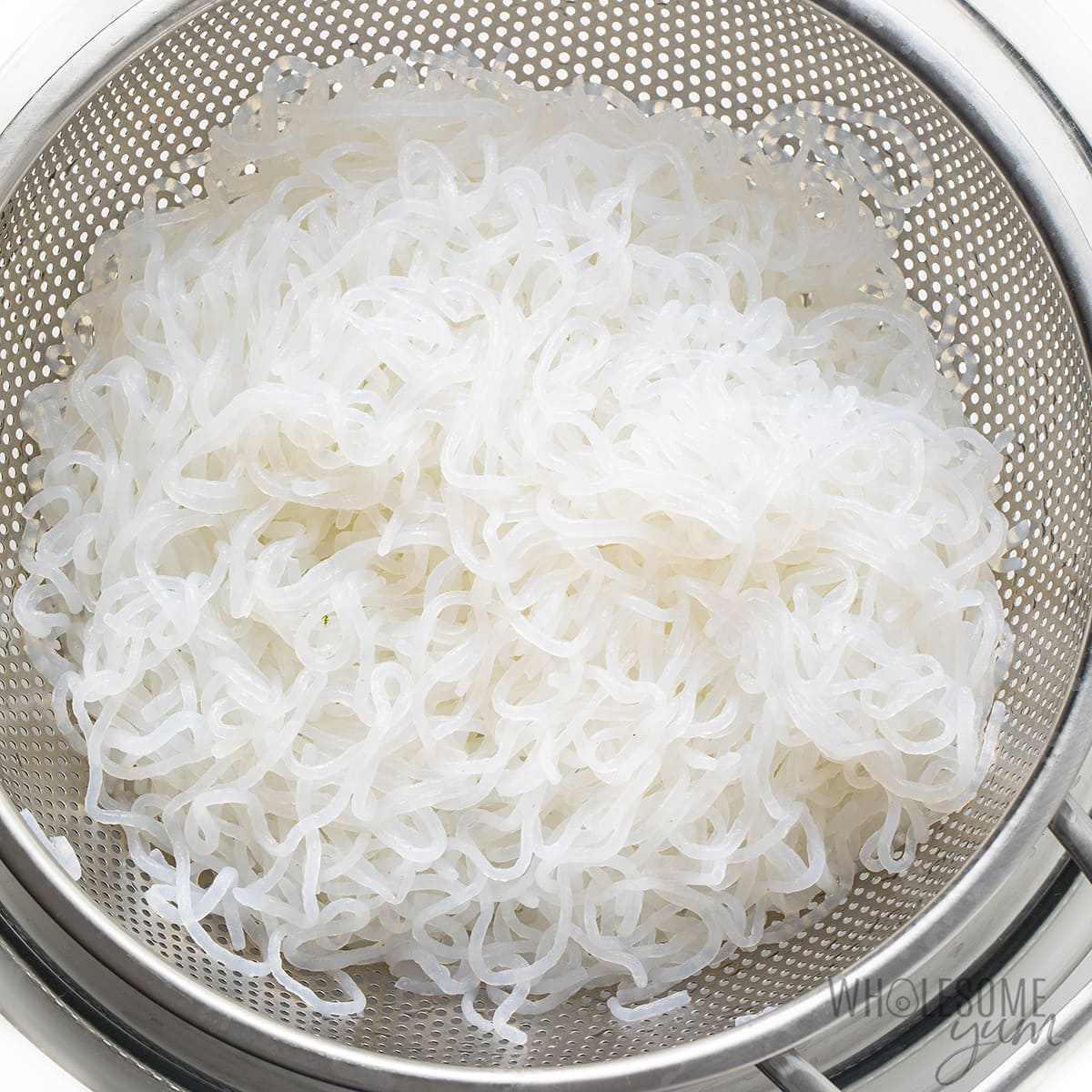
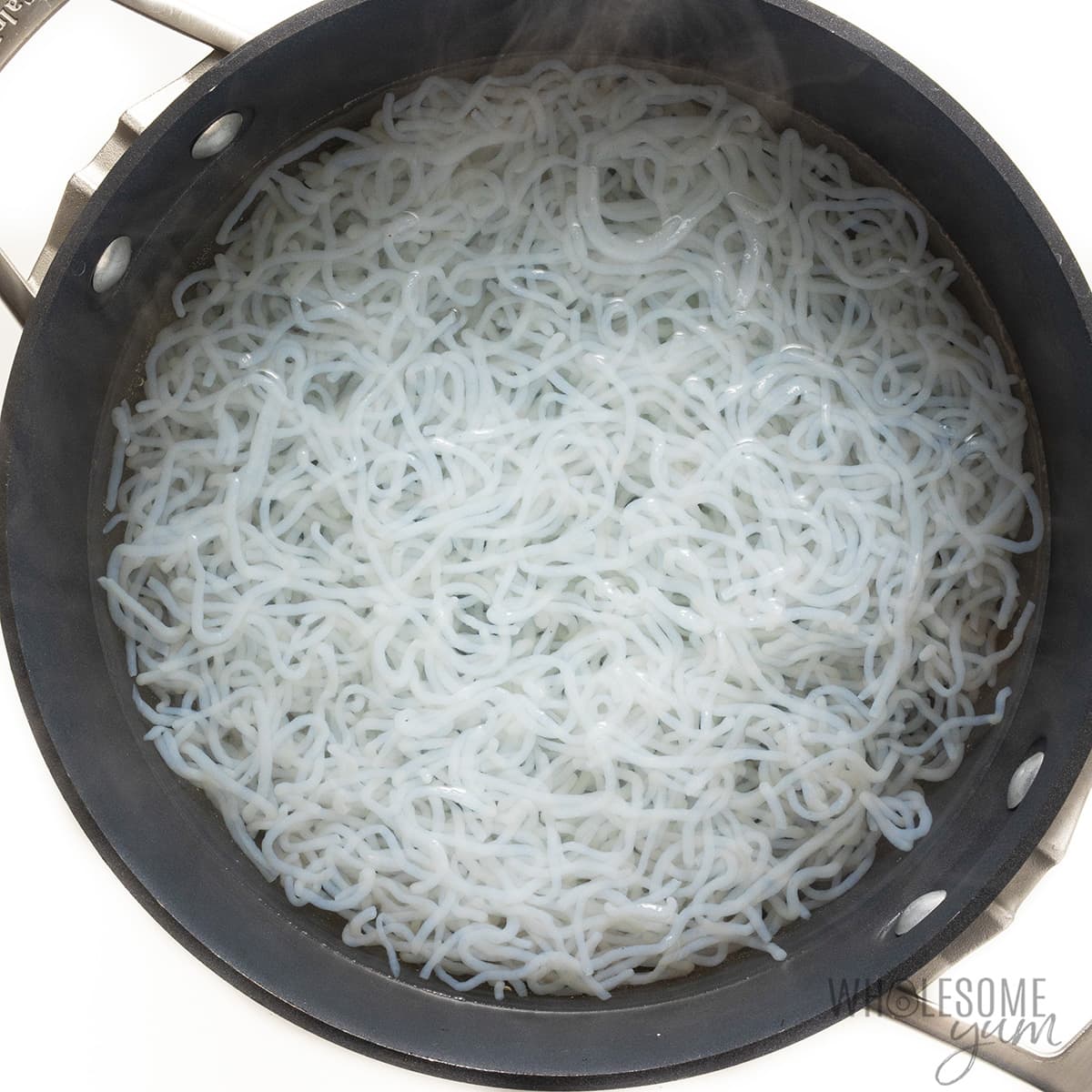
- Drain. Return noodles to the colander to drain. Rinse well again under running water. Pat very dry with paper towels.
- Stir fry. Heat a large skillet over medium-high heat. Add noodles (no oil) and stir fry until very dry. Remove and cover.
TIP: The dry stir frying step is crucial for the best texture and flavor.
Whether you skipped the boiling step above or not, definitely don’t skip the stir fry step. It really helps to make your miracle noodles as neutral – and as close to real pasta in texture – as possible.
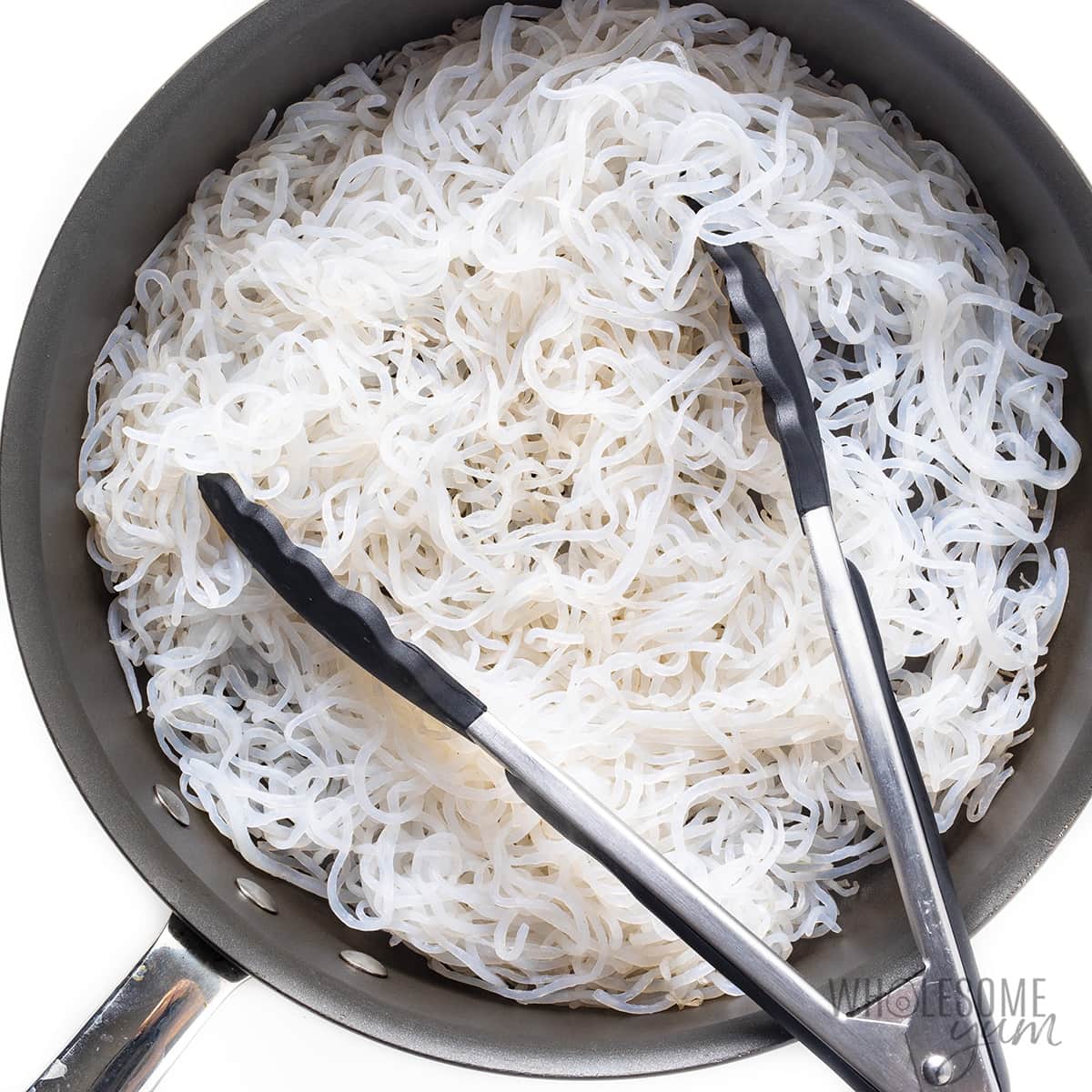
Finish With Garlic Parmesan Sauce:
You can use any pasta sauce you like for shirataki noodles! The one we’re making here is a creamy garlic parmesan sauce:
- Saute the garlic. Add olive oil to the skillet over medium heat. Add minced garlic and cook until fragrant.
- Add broth and cream. Bring to a simmer, then reduce heat and simmer until volume is reduced by half.
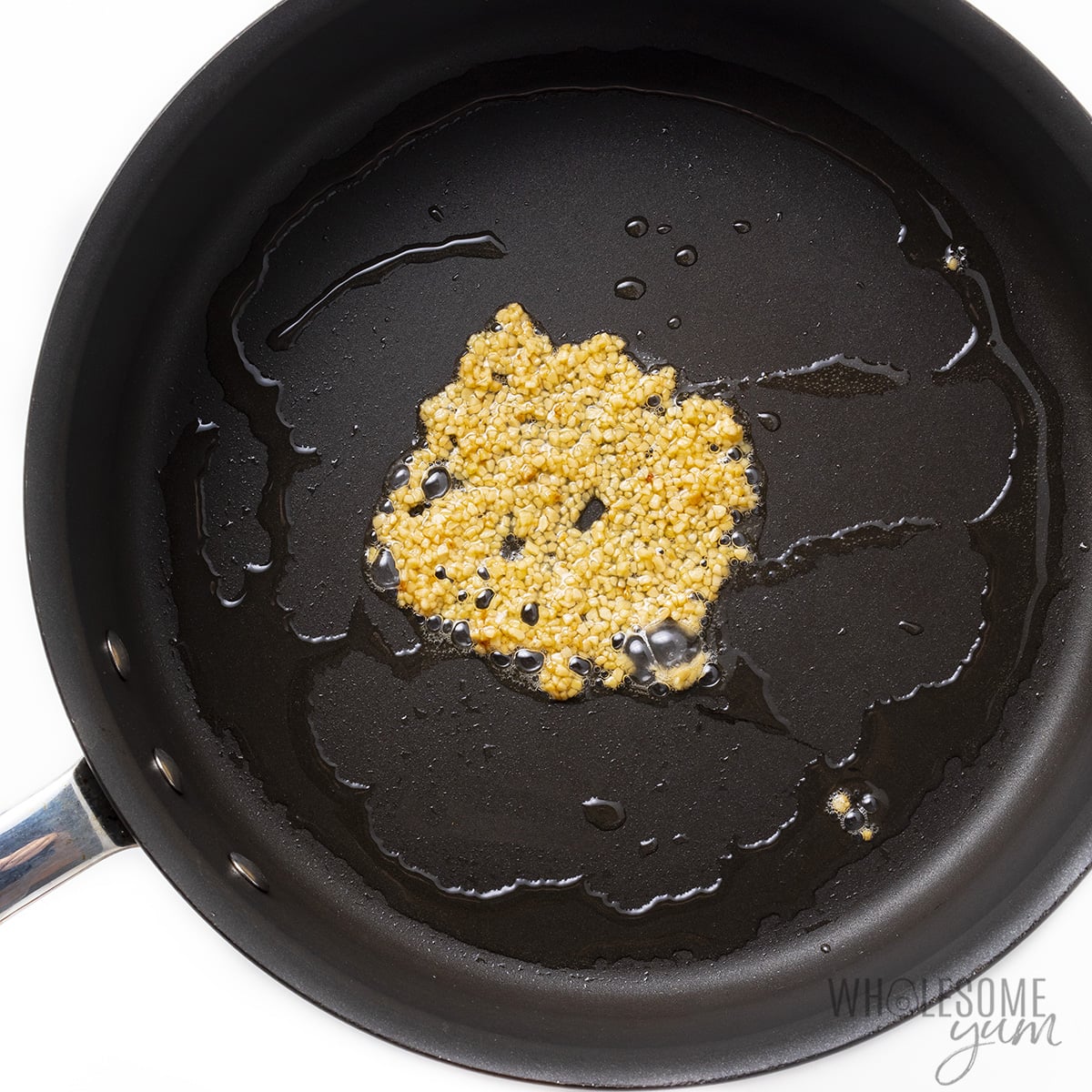
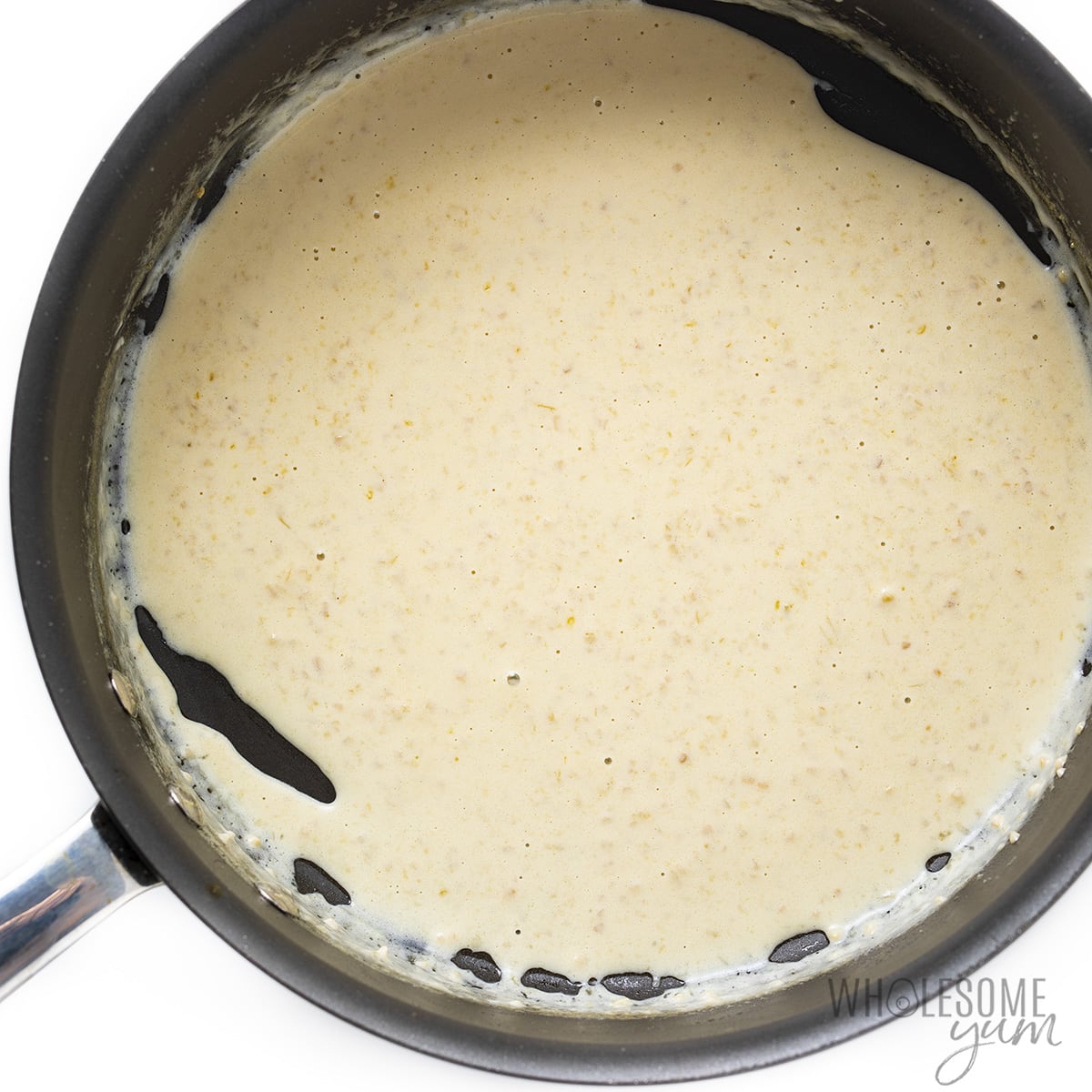
- Thicken with cheese. Stir in the parmesan cheese, until smooth and thick.
- Toss. Add noodles back to the skillet and stir to coat in sauce. Cook until hot. Season with salt and pepper to taste.
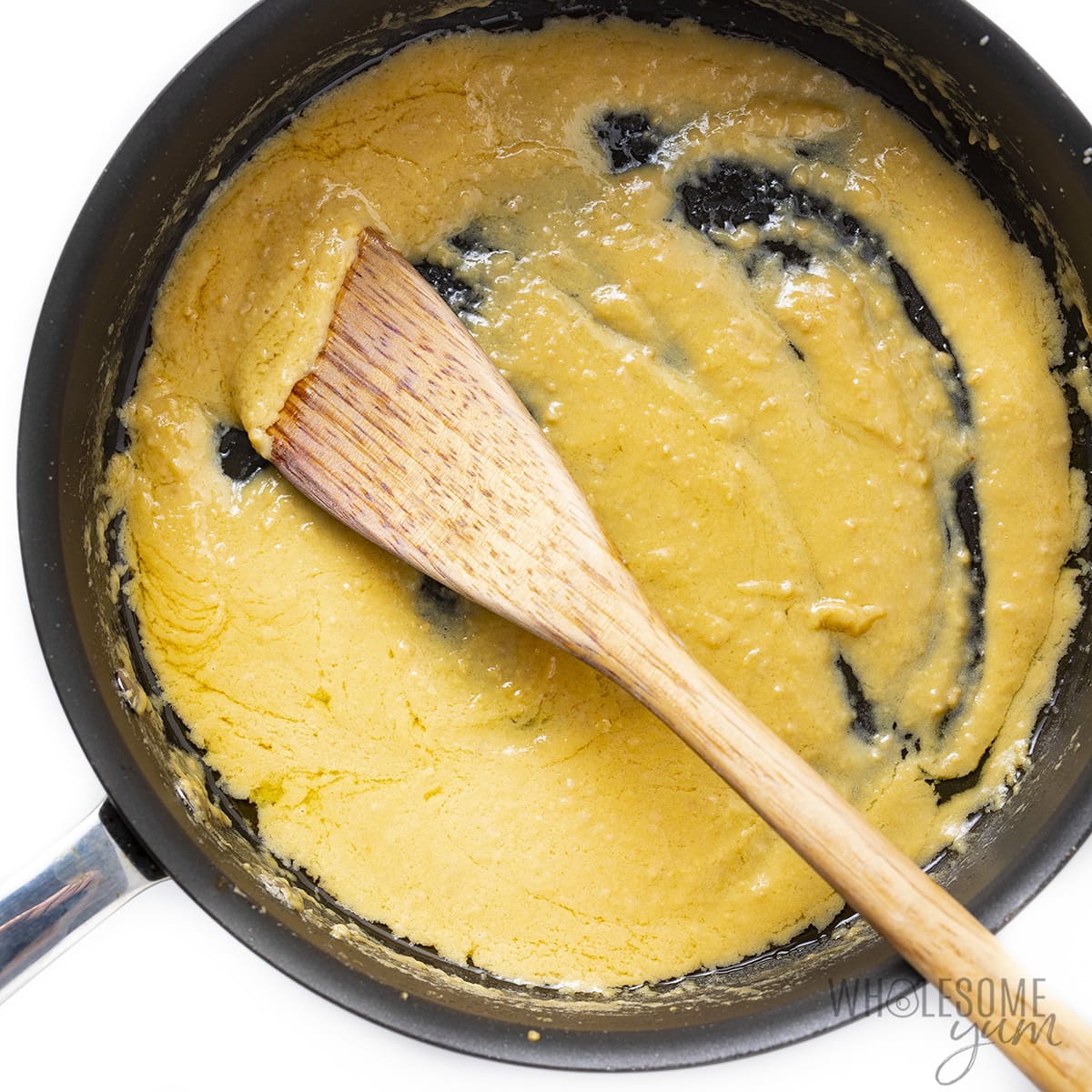
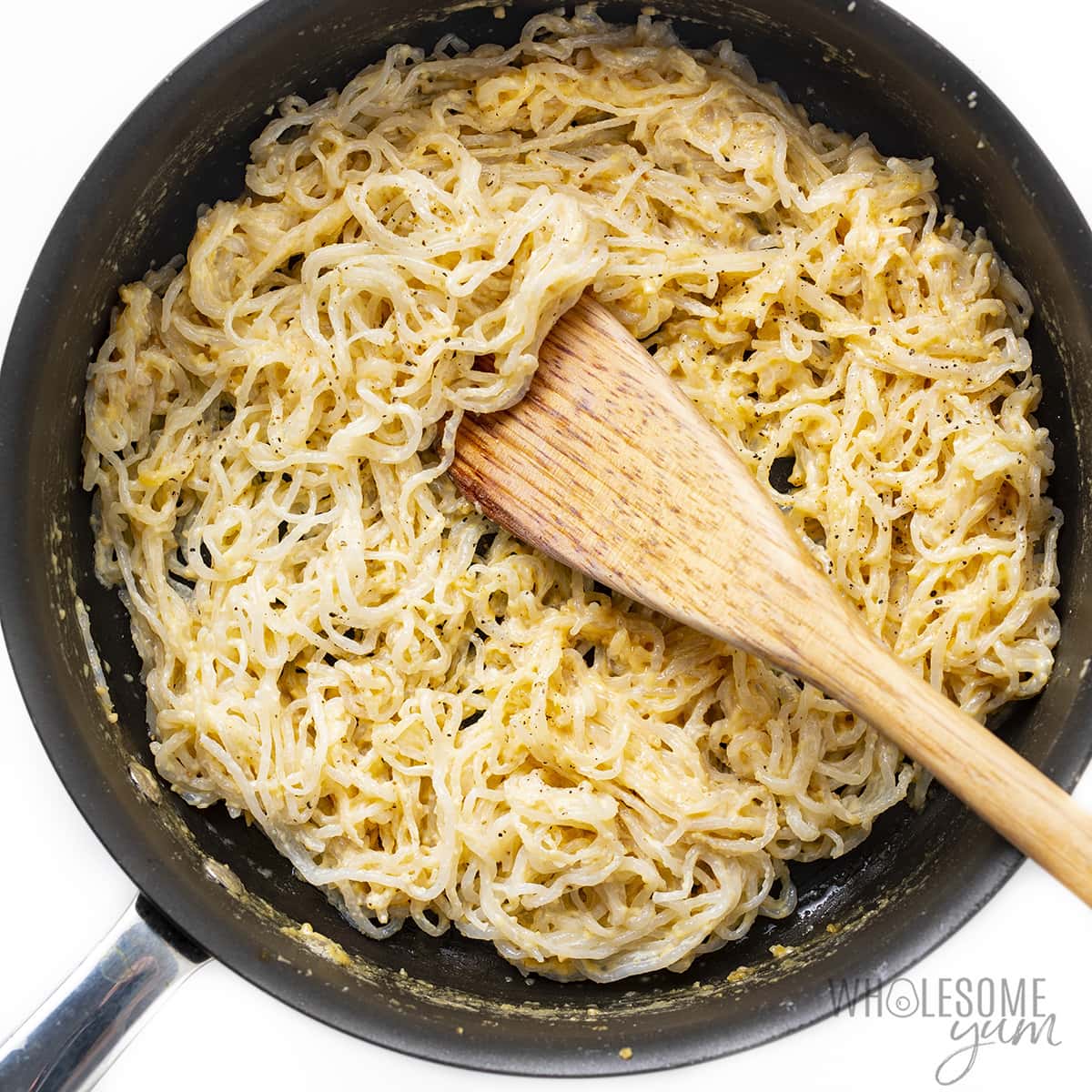
More Sauces For Konjac Noodles
Beyond the garlic parmesan sauce above, you can make shirataki noodle recipes with all your favorite pasta sauces! These are some of my favorites:
- Sugar-Free Marinara Sauce – You can make this plain or add ground beef to it. You can also add gluten-free meatballs for a full spaghetti and meatballs meal.
- Alfredo Sauce – My favorite other than the garlic parmesan one above, and they are very similar. These noodles are the perfect replacement for fettuccine.
- Pesto sauce – Make your shirataki noodles sing with a dollop of pesto sauce! You can also make it creamy by adding a little heavy cream to it.
- Mushroom Sauce – Mix the noodles with a little butter, then make creamy mushroom chicken and serve over them.
- Cheese Sauce – Instead of making cheese sauce for broccoli, try it on this pasta instead!
- Chicken & Sauce – Top these noodles with marry me chicken in sun-dried tomato cream sauce, chicken Florentine in a creamy spinach sauce, or chicken marsala.
Storage Instructions
- Store: Keep in the refrigerator in an airtight container for 3-4 days.
- Meal prep: Make these ahead of time and store in the fridge. They reheat really well.
- Reheat: Warm the noodles in the microwave or a hot skillet, until warm.
- Freeze: Don’t freeze your shirataki noodles! Because the noodles have so much liquid in them, they will not thaw well after freezing.
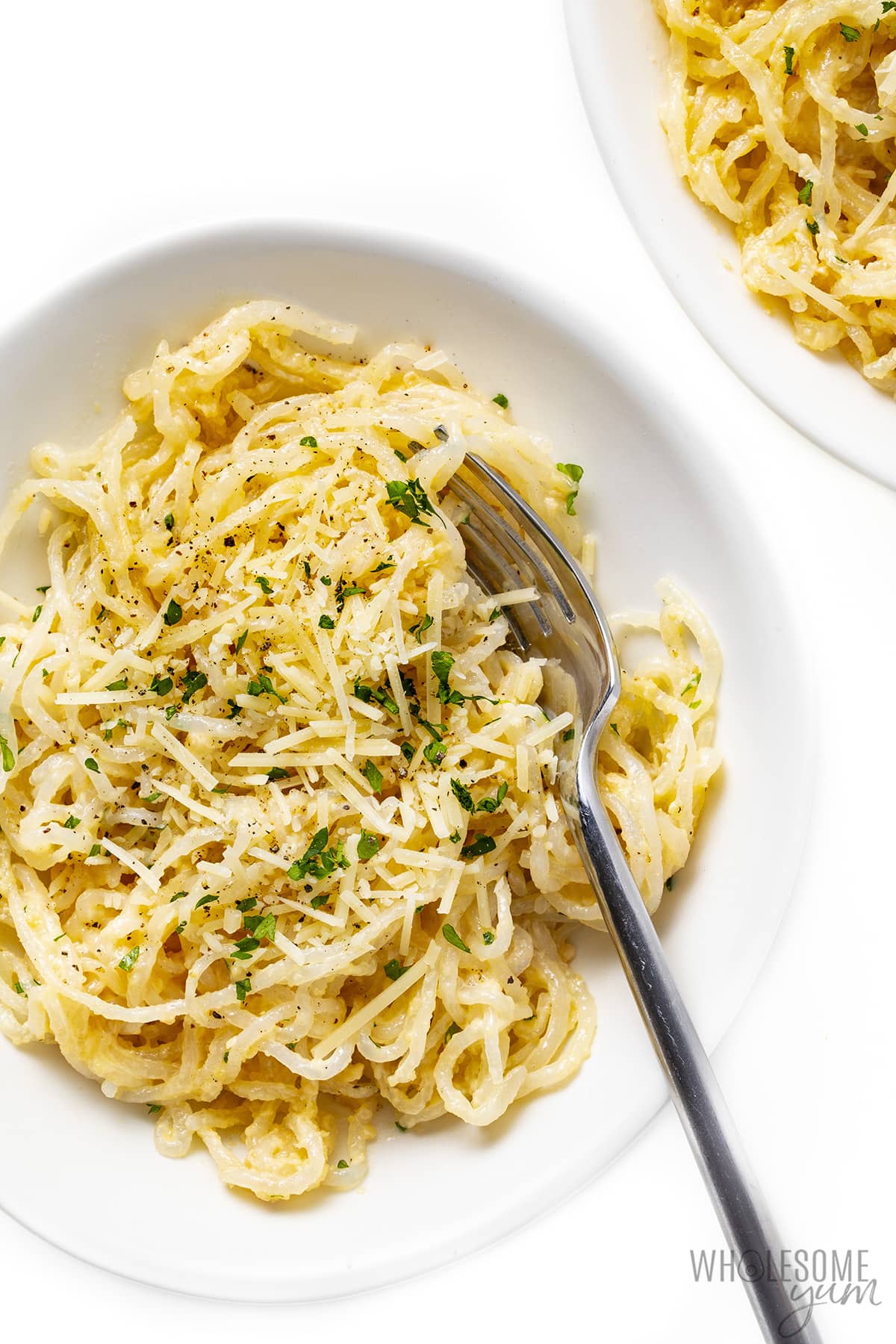
More Low Carb Noodle Recipes
Noodles are a staple in many diets, but what if you’re looking for something a little lighter and low carb? Check out these noodle recipes — you won’t miss the starch!
Tools For Cooking Konjac Noodles
- Miracle Noodles – This is my go-to for shirataki noodles recipes. They are soy-free and the texture turns out great when you use the steps in the recipe below.
- Colander – Draining the miracle noodles before cooking is imperative. This colander is great because you can place it on the bottom of the sink, and the base won’t allow water to splash back up to your noodles!
- Large Pot – This pot has thick, even heat distribution for efficient cooking and works on a variety of cooktops.
- Heavy Duty Skillet – Use this to get the noodles nice and dry, for the best texture.
Shirataki Noodles (Best Recipe)
Learn the BEST method for how to cook a shirataki noodles recipe (konjac noodles) to an al dente texture. This recipe takes just 25 minutes!
Instructions
Tap on the times in the instructions below to start a kitchen timer while you cook.
-
Rinse shirataki noodles very well in a colander, under cool running water.
-
Bring a pot of water to a boil. Add the konjac noodles and boil for 3 minutes. Rinse well again under running water.
-
Pat very dry.
-
Heat a large, heavy bottomed skillet over medium-high heat. Add the noodles (no oil) and stir fry for about 10 minutes, until very dry. Remove the noodles and cover to keep warm.
-
Add olive oil to the skillet over medium heat. Add the minced garlic and cook for about a minute, until fragrant.
-
Add the broth and cream. Increase heat to bring to simmer, then reduce heat and simmer for about 5-7 minutes, until volume is reduced by half.
-
Reduce heat to low. Gradually stir in the parmesan cheese, until smooth.
-
Add the noodles back to the skillet and stir to coat in sauce. Cook for 1-2 minutes, until hot. Season with salt and pepper to taste, if needed.
Did You Like It?
Leave a rating to help other readers (this also helps me continue to provide free recipes on my site), or get the recipe sent to your inbox.
Recipe Notes
Serving size: ~1 cup, or 1/4 entire recipe
Nutrition facts are provided as a courtesy. Have questions about calculations or why you got a different result? Please see our nutrition policy.
© Copyright Maya Krampf for Wholesome Yum. Please DO NOT SCREENSHOT OR COPY/PASTE recipes to social media or websites. We’d LOVE for you to share a link with photo instead. 🙂
Shirataki Noodles
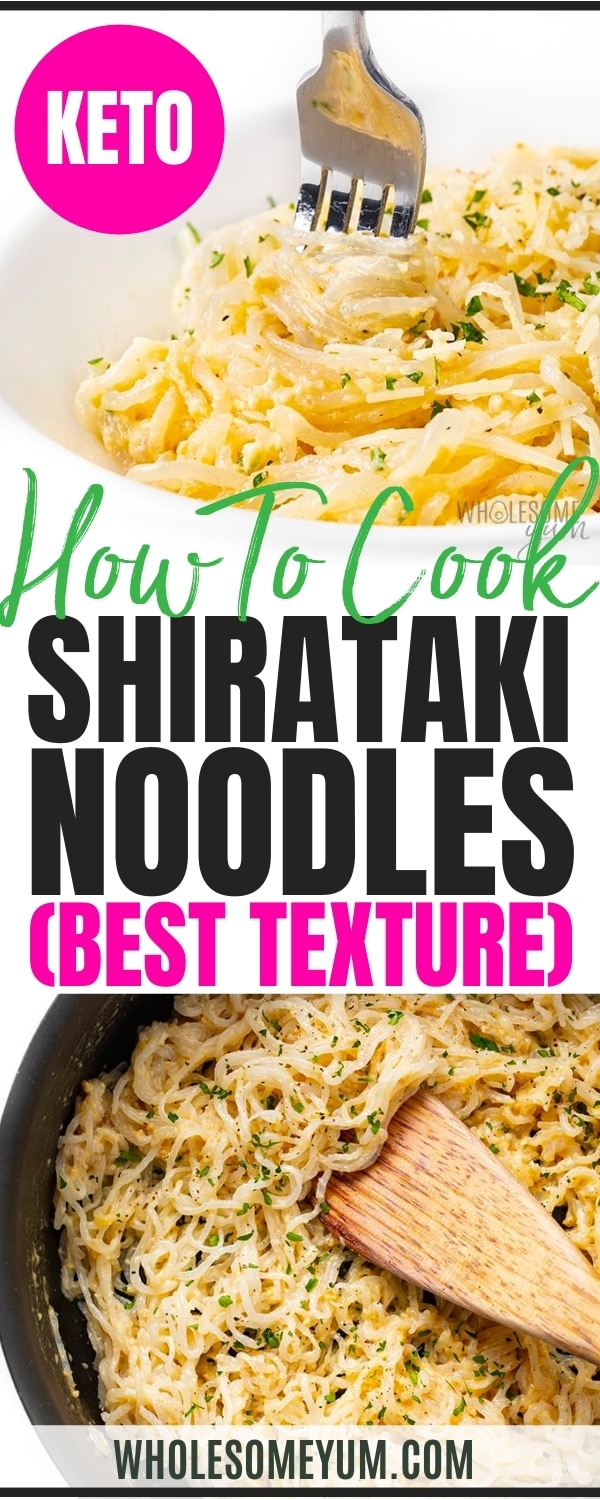
 My
My Shop
Shop Wholesome Yum
Wholesome Yum
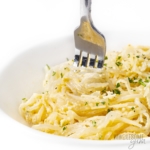

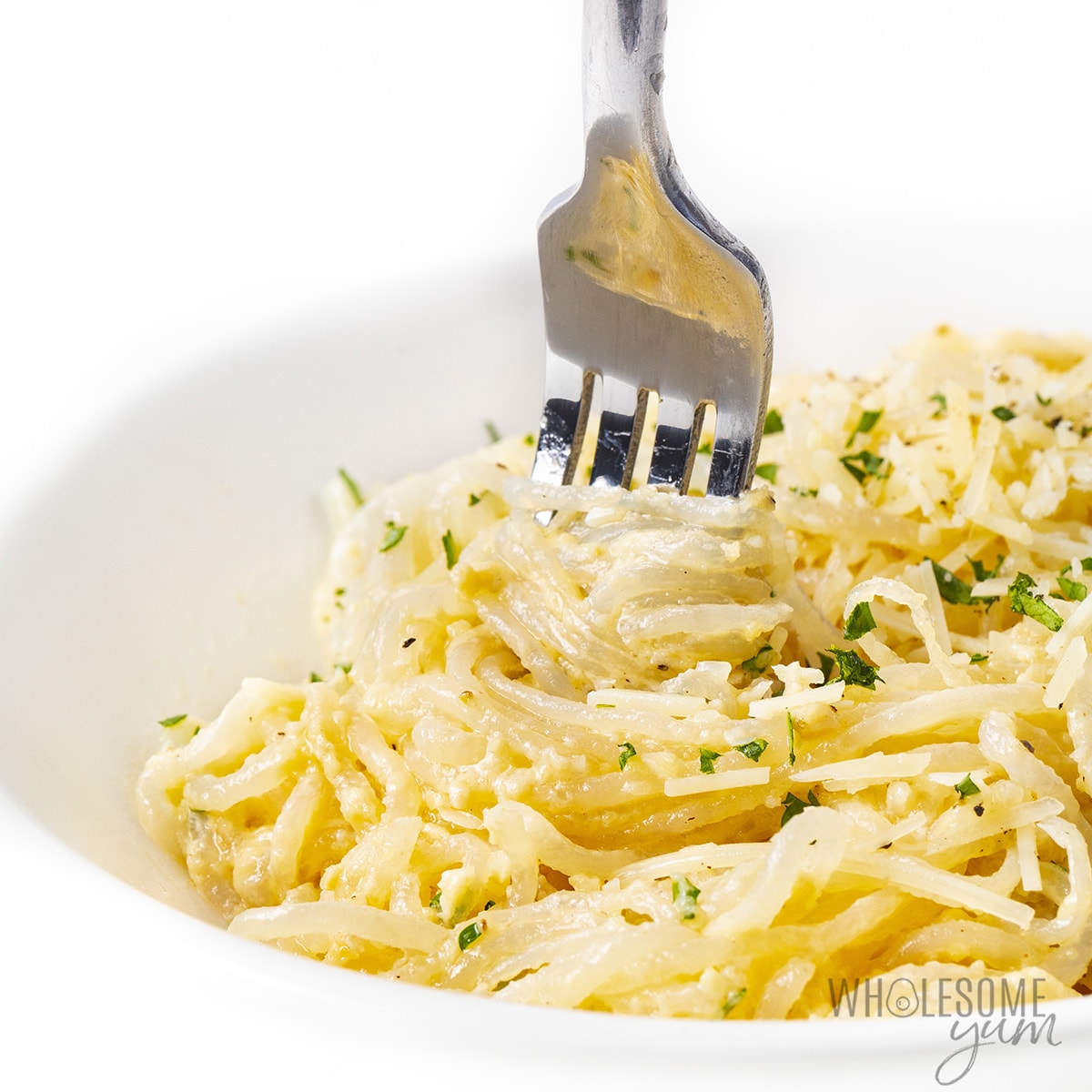
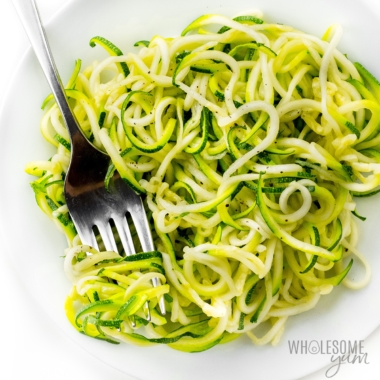
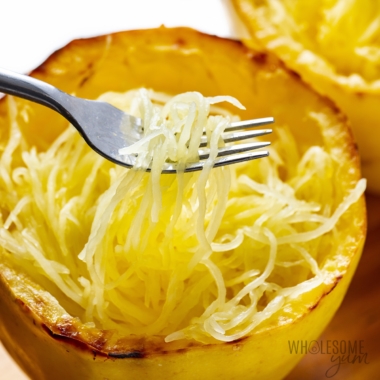
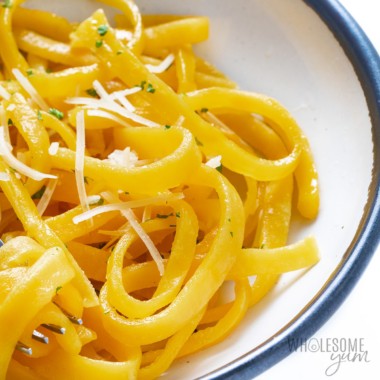
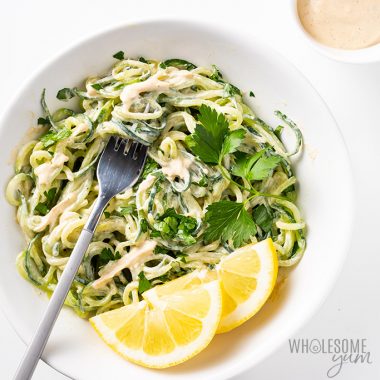
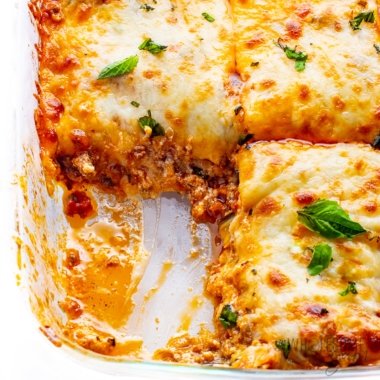
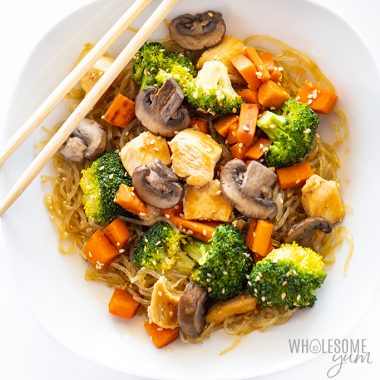
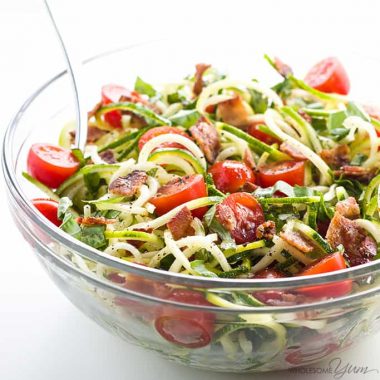

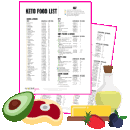




82 Comments
Mary
0can this recipe be prepared i in advance and frozen to reheat?
Wholesome Yum D
0Hi Mary, You cannot freeze shirataki noodles because the noodles have so much liquid in them, they will not thaw well after freezing.
Bonnie
0I got the taste good for the noodles. But they are rubbery like and difficult to chew. The last and first time I tried they were fishy like and texture was ok. This time flavor good texture chewy. Suggestions for a less rubbery noodle?
Wholesome Yum D
0Hi Bonnie, I just want to confirm that you followed the recipe as written?
Jason Fahy
0Thank you! The first time I tried NuPasta noodles they turned out nasty, but this time my wife made enthusiastic noises. 🙂
BB Atkins
0I just whipped this together for my family for lunch (1/2 recipe) and they loved it. I added in some chicken and a dash of onion powder, then garnished with a little parsley and it was a real treat. Will definitely make again!
Tony
0Thanks for the recipe. I’ve been using these noodles for years and cook them almost the same way except for the boiling step, so I’ll try that.
I also use them to replace rice, by chopping into small pieces either before or after cooking. The trick is to cover the “rice” with sauce (chilli, curry, etc) because it’s so bland. I have a slight preference for homemade cauliflower rice, but sometimes konjac noodle-rice is simply quicker.
Loretta C
0Great
L. Neelley
0I just found a cream substitute by Country Crock, plant based dairy free heavy whipping cream. I found I could thin it with a little water for sauces. For me the taste was pretty close to the real thing.
Douglas
0Is there a substitute for the cream? I am having much difficulty finding Konjac/ shirataki recipes without large amounts of creams and oils.
Wholesome Yum D
0Hi Douglas, I have put pesto on these noodles in the past.
Patti
0Your recipe was perfect! Thanks for all the different ways you tried so I didn’t have to. I used the angel hair noodles, stir fried veggies, some coconut aminos in place of soy sauce, and protein was a turkey burger. Your noodle recipe brought it all together.
Marilynn Davis
0I wash and rinse as you recommend. I remove the portion I wish to use and the remainder, I place into a container and cover with cold water, cover container and refrigerate up to a week. Then, when ready to use the remaining portion, rinse and continue with the process!! Works for miracle rice and all varieties of the “miracle noodles”.